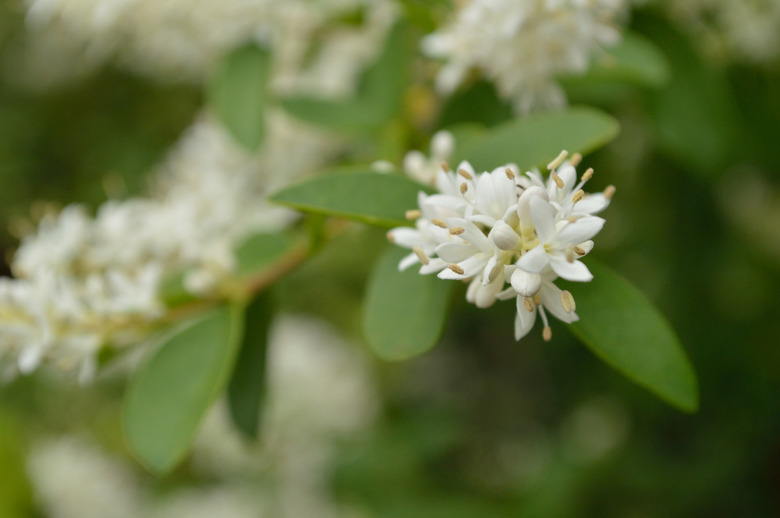What Type Of Fertilizer Do You Use On Ligustrum Shrubs?
Long relied on for their use in low-maintenance hedges, Ligustrum shrubs, commonly called privet shrubs (Ligustrum spp.), are hardy in U.S. Department of Agriculture plant hardiness zones 3 through 11, depending on the variety. In the right conditions, sun-loving privets make nearly impenetrable walls of glossy, golden-yellow to deep-green foliage. They respond to the right soil amendment and fertilizer with vigorous growth and improved disease resistance. In fact, fertilizing some privet varieties may encourage their invasive tendencies. The plants also contain toxins that cause very uncomfortable symptoms when eaten. Don't plant or maintain privets without considerable thought.
Amending the Soil
Amending the Soil
Before planting privets, amend the soil with organic, well-aged compost. Although not technically a fertilizer, compost improves soil's structure as well as its moisture and nutrient retention, and it suppresses plant-attacking pathogens. Break up the top 8 to 12 inches of the soil with a spade or tiller, and then work in a 1-inch-thick layer of the compost. Use about 30 pounds, or 0.8 cubic feet, of compost for every 10 square feet of soil surface, the Cornell University Department of Horticulture advises on its website. Use more compost if the soil is very heavy or sandy.
Selecting a Fertilizer
Selecting a Fertilizer
As broadleaf hedge plants, privets use lots of nitrogen, which keeps their leaves dense and green. One type of fertilizer best suited to meet their need is a granular, 15-5-10 formula, according to the University of Florida IFAS Extension website. It is 15 percent available nitrogen, 5 percent phosphorous and 10 percent potassium. From 30 to 50 percent of the nitrogen should be a slow-release or water-insoluble form that feeds the shrubs over an extended period. If your privets have vibrant foliage color and grow at a satisfactory rate, then their soil supplies what they need and fertilizer isn't necessary.
Timing Your Fertilizer Application
Timing Your Fertilizer Application
If you decide to fertilize your privets, begin in their first full growing season after planting. Fertilize in early spring and late fall, when they aren't putting out new growth. Their roots absorb the most nutrients at those times. If you want to boost the plants' growth rate or improve their foliage color, then add a third application in midsummer. If your location is in a drought, don't fertilize without watering the privets' soil regularly. Moisture-deprived roots can't absorb fertilizer, and it may burn them.
Applying the Fertilizer
Applying the Fertilizer
Give your privets 10 1/2 ounces, or 1 1/4 cups, of the granular, 15-5-10 fertilizer for each 100 square feet of soil surface. Don't overdo the amount, however, because excessive fertilizer leaches from soil and goes into the water supply, contaminating rivers, streams and lakes. Scatter the granules evenly on the soil around the privets, covering their root zones from their bases to a distance 1 1/2 times the widest part of their branches. Water the fertilized area well afterward.
References
- ZipcodeZoo.com: Ligustrum Amurensis
- ZipcodeZoo.com: Ligustrum Japonicum
- North Carolina Cooperative Extension: Ligustrum Japonicum, Ligustrum Sinense, Ligustrum Lucidum, Ligustrum Vulgar
- Gardening with Charlie Nardozzi: How to Grow — Privet
- Cornell University, Department of Horticulture: Using Organic Matter in the Garden
- University of Florida IFAS Extension: Ligustrum or Privet
- University of New Hampshire Cooperative Extension: Fertilizing Trees and Shrubs
- University of Florida IFAS Extension: Fertilizer Recommendations for Trees and Shrubs in the Home Landscape
